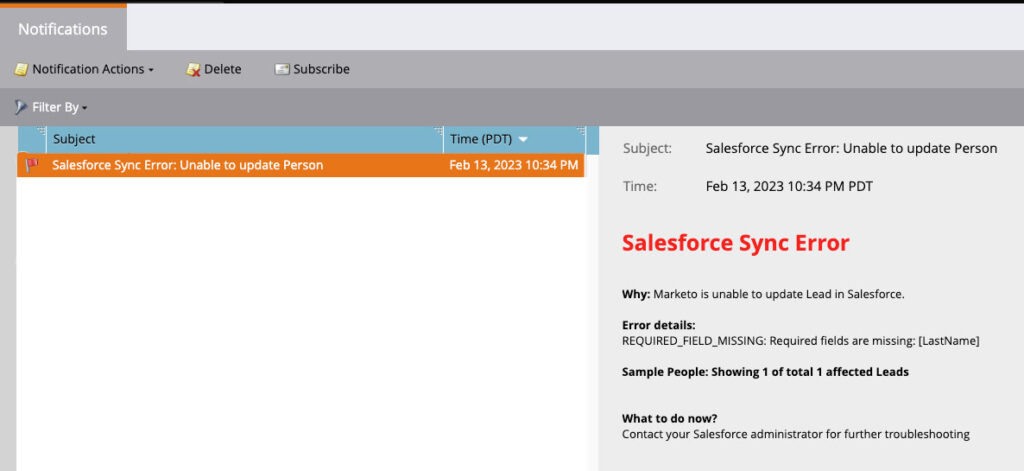Overview
Marketing automation and Customer Relationship Management systems have seen numerous advancements in automation, but there are still numerous ways data quality issues can break your system or processes. Whether it is someone importing a list without the proper country value being written in or having multiple fields tracking the same data piece, data quality issues can wreak havoc. Thankfully, with both tools, your marketing and revenue operations teams can put safeguards in place to limit these issues. There is still a chance of human error causing an issue, but putting in some data standardization will help ensure your system continues to run smoothly and your data quality stays high.
What are examples of data quality issues?
Depending on your organization, you can have many different examples of data quality issues. For instance, your lead routing tool might work off of a country value being the full value (ex. United States) but your web forms are capturing the acronym instead (US). In this example, leads coming through your web form won’t get routed correctly due to this issue.
Another example of a common data quality issue are list imports. Events, tradeshows and other third party providers often send lists with little information (for example, lists without an email address included!) or data that doesn’t match your structure (using the Country example as mentioned above being one of them). You might not be able to control what those vendors provide, but you can put list scrubbing processes in place to ensure your teams know what needs to be included and how to clean up those lists.
What are the side effects of data quality issues?
Data quality issues can hurt so many processes within your system. Lead creation, lead processing and lead management can get broken if simple data issues occur. And having to make fixes after the fact can add more work to your plate and an unhappy marketing and sales team.

When should a company put a stop to data quality issues?
Companies should look to put a stop on data quality issues right away! If they continue to let things pass you will end up with a database that will have poor standardization, broken lead processing, broken lead management processes and inconsistent customer profiles.
How should a company go about clearing up data quality issues?
There are a few phases a company needs to work through in order to clear up data quality issues. The first step is to establish data standardization within your tech stack. This includes your marketing automation system, CRM and any other tool that integrates with those two tools. A great first step is to do a field audit and work with your respective teams to understand which fields are most important for your customer profile and what those values should be. Like in the example mentioned earlier, discuss whether the country value for a lead or account should be the full name or an acronym. Getting alignment from all teams will help ensure everyone is following the same approach when working within their system.
For marketing operations, be sure to do an audit of your MAP and ensure the highlighted fields for customer profile are following the desired outcome. Once that has been reviewed, make sure you have automated programs in place to help insure during the lead creation process, there are safeguards in place to quickly edit a new lead that comes in with an incorrect value to get fixed. A great example of this is creating a data standardization program for things such as the value for State. If your company requires state to be spelled out and someone creates or imports a record with the state value being a two letter acronym, have a program that catches those and rewrites the field to match the full state spelling. That way, once that lead flows into your lead processing system, it will get assigned correctly and the correct sales team member will be able to follow up with them in no time!
Another thing to help mitigate data quality issues is to create reports and alerts in your systems that would highlight any errors that might be occurring so the respective teams can quickly look into the issue and make the fix where needed.
Finally, data quality is a team effort, but not everyone knows the ins and outs of data quality. That is where you can help minimize the human error component we often see with data quality and provide your team’s templates and documentation to show how the data quality is imperative for their roles. For example, in marketing, it would be a good idea to create a lead import template that lists out all of the fields (required and nice to haves) as well as each item spelled out as to what is needed in order to go into the system. That way your teams will have the resources to mitigate common data quality issues.

Who should manage data quality at a company?
The easy answer to this question is everyone! But to be more realistic, the operational teams within your organization that are managing your MAP, CRM and any other important databases should be managing their tools to ensure the data those systems are passing to each other are consistent and correct. If or when an issue arises, make sure to have syncs with those members to discuss the issue, how it occurred and steps to fix it as well as a plan for how to mitigate the same issue from occurring in the future.
Conclusion
Data quality is an important, but uphill battle for most companies. But putting the right measures in place can at least mitigate them from occurring and allow your teams to focus on other areas of the business. But with the right programs put in place, you will be able to react quickly when an issue arises and allow visibility into the cause of the issue.







